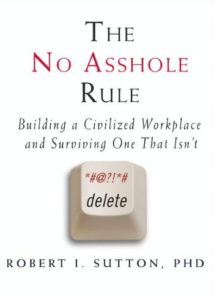In Part I of this series we discussed how Homer’s Odysseus, exemplified a leader with high emotional intelligence who was able to think situations though, and make difficult decisions when necessary. We also considered the executive education value of perspective and emotional distance that this classic story provides.
One of the reasons the Odyssey is a classic is that Homer constructed the story on a number of levels. Many of us, when reading it for the first time, read it for the journey and the adventures. The Olympian gods add a surreal, almost Syfy, element for modern readers. Homer, perhaps the first Bard, is a master story teller. As such he advises us about all mankind, including ourselves.
In the first few lines (Fagles translation) we’re told a great deal about Odysseus. He is a “man of twists and turns driven time and again off course,”. As a man of twists and turns, this applies in both a physical and mental sense.
Which one of us has not been “driven time and again off course” as we pursue our goals? Our protagonist shows us over and again the value of perseverance. Odysseus is a poster child for perseverance. He continues to overcome obstacles placed in his way, and there are many of them. It’s a quality that all good leaders must have and employ.
Within the next few lines we’re told, “many cities of men he saw and learned their minds,” Homer seems to be telling us that a broad knowledge base is essential. Being open to wide set of people and different experiences is an excellent education. Understanding, empathizing with people is critical to success. Being able to employ empathy and diverse experiences to come up with new solutions are crucial in leadership. We learn there are multiple ways of organizing, viewing situations and accomplishing goals.
When the Bard tells us that Odysseus, “Learned their minds,” this indicates both an intellectual and practical curiosity. How do they do things? What can we pick up that will help us? How can this help us improve our probabilities of attaining our goals. Good leaders tend to be life long learners, like Odysseus. Our world is constantly changing so executives need to stay abreast of those changes.
Odysseus’ overarching mistake in the Odyssey occurred when he let his hubris run amok. He and his surviving crew had just escaped from the bloody, man eating Cyclops. As they sailed away Odysseus wanted to be sure the Cyclops knew who had tricked and blinded him and hollered out his name. The Cyclops, however, was the son of Poseidon the ocean god. So he called out to his father to destroy Odysseus and Poseidon sent storm after storm to wreck his ship and destroy Odysseus for years.
Odysseus learned from his mistake and kept his hubris in check for the remainder of the story. It was a lesson learned at quite a high cost. A mentor of mine used to say we must all pay the tuition and the cost of a good education is often high. Many of us seem to learn best by our mistakes.
Homer gives us a solid understanding of the character of Odysseus, showing us both his admirable and less than admirable traits. We too are a decided mix of both. The point is, our protagonist is human like us, not superhuman. He has strengths and faults as we all do. We can learn from both, as we catch glimpses of ourselves on our way to becoming better executives.
In our next and final post in this series we will look at the other characteristics that recommend Odysseus as a model for leaders today.



